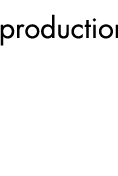|
This newsletter is a result of Impact's collective years of experience in publication services helping corporate clients develop effective, creative communication tools. Please feel free to forward this email to others within your organization. Getting Published, Issue 2 Your Manuscript--Your Money By Dave Gillaspie President, Impact Productions 847/530-3214 • http://www.impact.ws I know you're eager to get your project typeset, printed, and out the door, but don't let that enthusiasm cost you or your company more money than it should. When you're faced with any publishing project, the first step you need to take is finding a good production typesetter. (I'd be glad to make a recommendation if you don't know one!) My years in production typesetting, which predate the desktop computer (I started when I was six . . .), have taught me things that will make your project flow through the typesetting process quickly and efficiently. These tips will save production time which translates into dollars that stay in your pocket. One Tip that Will Save You Big! There are certain things in life that you should never need to say because they are so obvious. One of those is: Spell check every document before you send it to the typesetter. Nonetheless, documents flow into type houses everyday that have not been through this critical step. Spell check needs to happen after the final edits have been made. So, as you're sending the project out the door, ask yourself these questions: "Did I spell check the document? Has everyone read it who needs to? Did I spell check it? Does it read exactly the way I want it to print? Did I spell check it? Have I secured the proper permissions for any quotes? Did I spell check it?" Did I mention spell checking? Alterations and editorial changes done in typesetting are far more costly than making them yourself prior to typesetting. I'm always amazed at how many alterations are made at typesetting that could have been avoided by a simple spell check. But you'd be surprised to know how often I hear editors or project managers say, "Oh, we can change that in typesetting." It's true, you can change nearly anything in typesetting, but realize the more changes you make, the more money it will cost. Let's just say that the billing department always loves those folks who make changes "in typesetting." Pre-Type Decisions Before typesetting can start, you need to make some basic decisions: What size will the pages be? How will the book be bound? How many pages do you anticipate the publication to be? All these questions will drive elements of typesetting. You may need to consult with your designer or printer to help with some of these decisions. If your publication is being produced for the retail market it should be registered with the Library of Congress with an ISBN number. This number allows bookstores to search and find your publication when a customer asks for it. You can find more information on ISBN numbers at http://www.isbn.org. If your publication is going to be distributed publicly it is a good idea to copyright it. This is a simple process. You can find more information on copyright at http://www.copyright.gov. Here are a few other tips to help save you time and money . . .
Bottom line:
Make sure you are finished editing your manuscript, complete with a final spell
check, before sending it to typesetting. Like I mentioned earlier, you can do
nearly anything at typesetting, but late edits will cause you headaches and cost
you money. Topics Privacy Reprint
Permission Impact
Productions Want
to look good? Dave Gillaspie |
|
||




